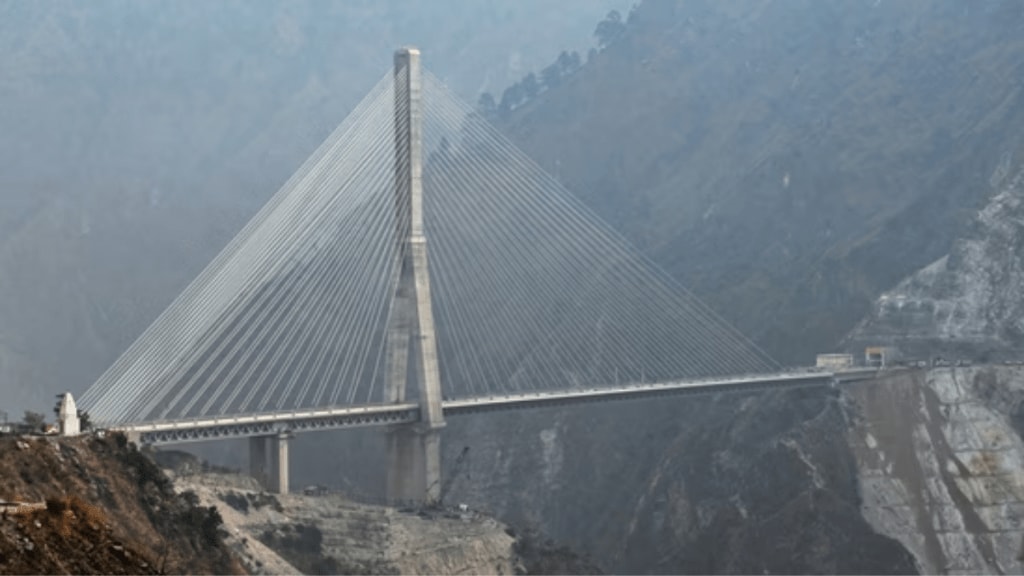Indian Railways continues to showcase its engineering excellence with the newly completed Anji Khad Bridge, the country’s first cable-stayed rail bridge. Located in the Reasi district of Jammu and Kashmir, this monumental structure is part of the ambitious Udampur-Srinagar-Baramulla Rail Link (USBRL) Project, designed to enhance regional connectivity and economic growth.
The bridge, about 80 km from Jammu, spans a total length of 725.5 meters and features a main pylon standing at 193 meters above its foundation, towering 331 meters above the riverbed. The Anji Khad Bridge crosses a deep valley, bridging the gap between Katra and Reasi, and will significantly improve connectivity between the Jammu region and the Kashmir Valley. The bridge’s design ensures it can withstand wind speeds of up to 213 km/h and handle a train line with a speed limit of 100 km/h, without posing any risk to the structural integrity.
This engineering marvel is situated in the challenging terrain of the Himalayan mountains, known for their complex geology and seismic activity. The construction was particularly challenging due to the region’s fragile geological features, including faults, folds, and thrusts. Site-specific investigations were carried out by IIT Roorkee and IIT Delhi to assess the conditions for the bridge’s construction.
The Anji Khad Bridge consists of four key segments: a 120-meter-long approach viaduct on the Reasi side, a 38-meter approach bridge on the Katra end, a 473.25-meter cable-stayed portion that spans the valley, and a 94.25-meter central embankment linking the main bridge to the approach viaduct.
Innovative Engineering and Construction Techniques
The Anji Khad Bridge’s design features 96 cables with varying lengths from 82 meters to 295 meters. It also incorporates an innovative hybrid foundation to stabilize the mountain slopes supporting the main pylon at the Katra end. Advanced techniques, such as DOKA Jump form shuttering and pump concreting systems, were used to increase construction efficiency and ensure safety.
In addition, a state-of-the-art tower crane, imported from Spain with a 40-ton capacity and extendable height of up to 205 meters, was used to aid construction activities at great heights. The use of this crane helped reduce construction time by 30%. An integrated monitoring system with numerous sensors has been installed on the bridge to ensure the structural health and safety of the bridge during operation.
The design and construction supervision of the bridge were handled by Italian company ITALFERR, part of the Ferrovie dello Stato Italiane group, with proof-checking done by COWI, a UK-based company. The project integrated Indian engineering codes with Eurocodes where required.
Boosting Tourism and Economic Growth in Jammu and Kashmir
Once operational, the Anji Khad Bridge will serve as a vital link for the region, enhancing tourism, boosting local economic growth, and improving transportation. Chief Administrative Officer of the USBRL project, Sandeep Gupta, confirmed that the section is now ready for operation, pending a final inspection by the Commissioner of Railway Safety (CRS). This historic bridge is set to transform the region’s connectivity, opening new avenues for growth and prosperity


